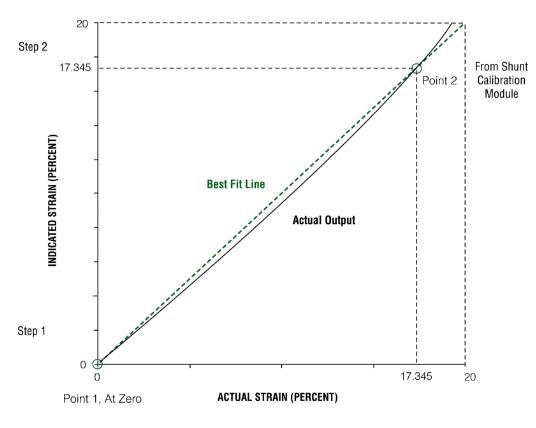What are they?
Shunt calibration modules are a means of transferring Epsilon’s transducer calibration to a customer’s electronics, so the output reads correctly.
A very common method of calibrating electronics for use with strain gaged transducers is through a process known as shunt calibration. A resistor connected across one arm of the sensor bridge causes the output to shift. When properly chosen this resistor will simulate an output whose value may be precisely measured and reported.
In order to set the electronics properly, it must read zero when the extensometer is at zero. It also must have the proper amplification (or output slope) so that non-zero readings are correct. Two points are required to accomplish this.
The Shunt Calibration Module works for any of Epsilon’s strain gaged extensometers and with nearly any electronics. As shown in the photos to the right, the module is a simple plug in device containing the shunt resistor. It plugs into a miniature connector extending out the back of the extensometer connector. When plugged in, it shunts across one arm of the sensor and shifts the output to a precise value recorded on the extensometers test certificate.

Calibration requires only these two simple steps:
-
Mount the extensometer on a sample. Adjust the output to read zero. This sets point 1 in the example graph above. This is the zero offset or tare.
-
Plug in the Shunt Module. Adjust the output readings to precisely the value provided. This sets point 2 in the example. This amounts to adjusting the gain or amplification.